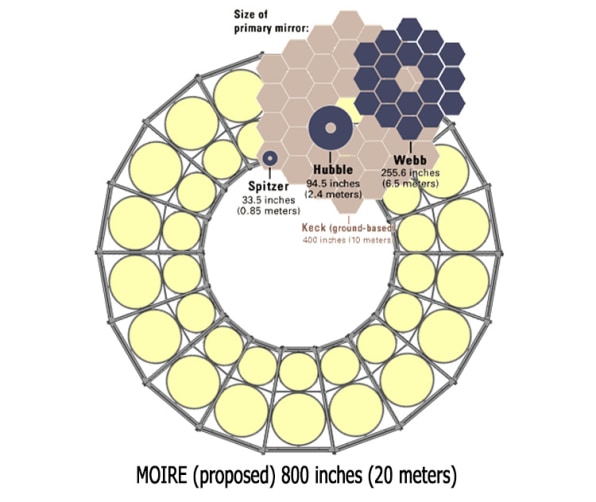In the world of telescopes, size matters, and bigger is better. Getting high-resolution images of Earth from space requires large, thick glass mirrors to reflect light from Geosynchronous Earth Orbit, where satellites hover 22,000 miles above the Earth.
Launching giant glass mirrors into orbit presents an obvious challenge: getting things into space is expensive, and the heavier the object you’re launching is, the harder it is to catapult it thousands of miles high.

DARPA, the Defense Advanced Research Projects Agency, is redesigning the traditional glass telescope to create an orbital telescope that’s both bigger and lighter than previous imaging satellites. The agency’s latest prototype is pretty ingenious: It’s plastic, and it folds.
Each light-focusing polymer membrane, housed between unfolding metal “petals,” is about the thickness of Saran wrap. The system starts out on the ground as a tightly packed group of petals 20 feet in diameter. Once it’s launched into orbit, the telescope unfolds to 68 feet across–about the length of a tennis court–like so:
This type of telescope “could enable us to fit much larger, higher-resolution telescopes in smaller and lighter packages,”according toDARPA’s program manager, Lt. Col. Larry Gun. And smaller packages would be easier and cheaper to launch into space. For reference, the primary mirror on the James Webb Space Telescope, another folding telescope with a 2018 NASA launch date, has a 6.5 meter diameter and weighs more than 800 pounds. The Hubble Space Telescope’s primary mirror, 2.4 meters in diameter, weighs more than 1,800 pounds. DARPA estimates that this system weighs about one seventh of what a traditional telescope of the same mass and resolution would.
The lightweight plastic doesn’t have as high of a resolution as glass mirrors, but it makes up the difference with its size. From orbit, it could see approximately 40% of the Earth’s surface, recording high-resolution images and real-time video. DARPA wants to use this watch out for missiles and peer into other countries’ back yards from afar, but being able to see huge sections of the Earth from space at one time could also be useful for weather tracking and disaster response.
